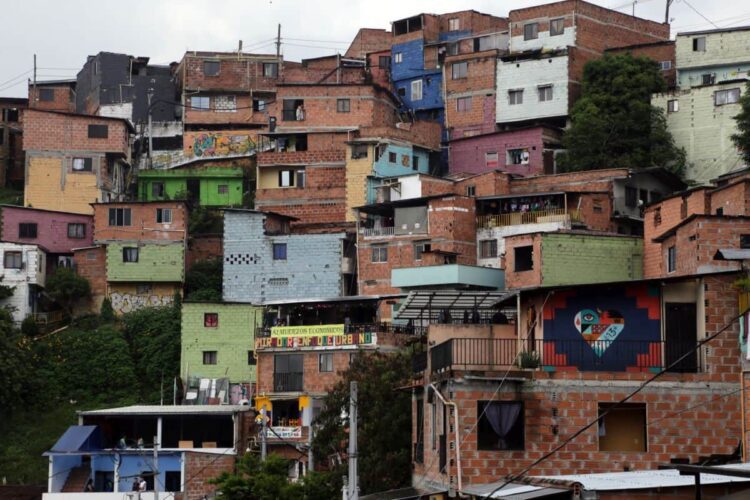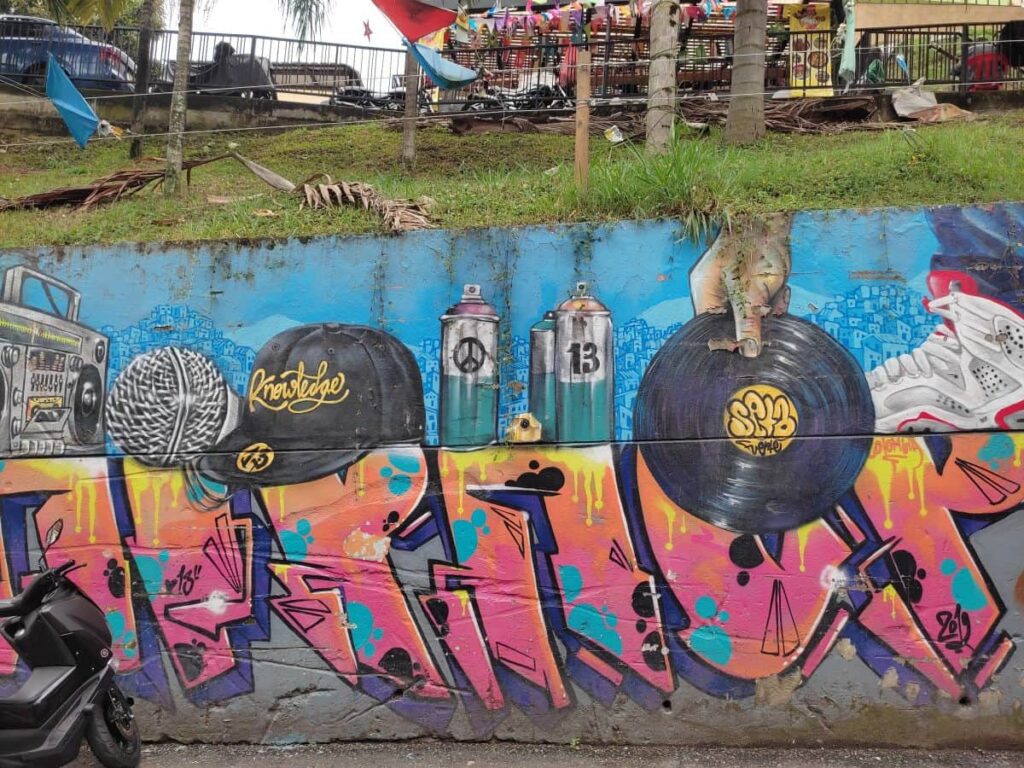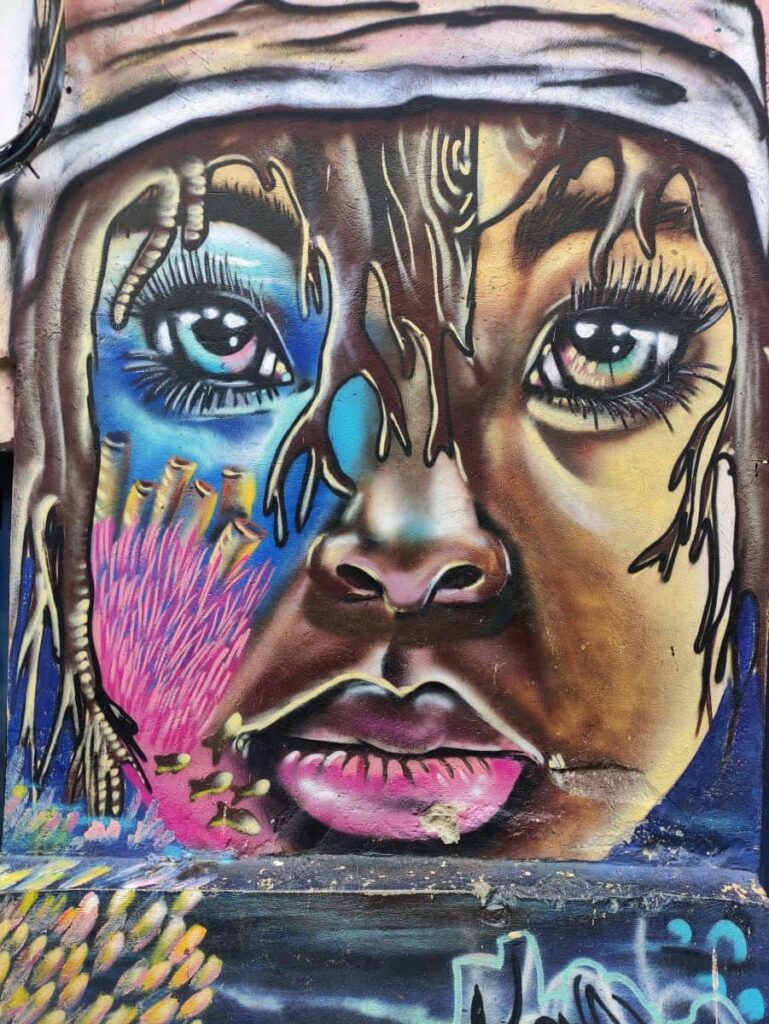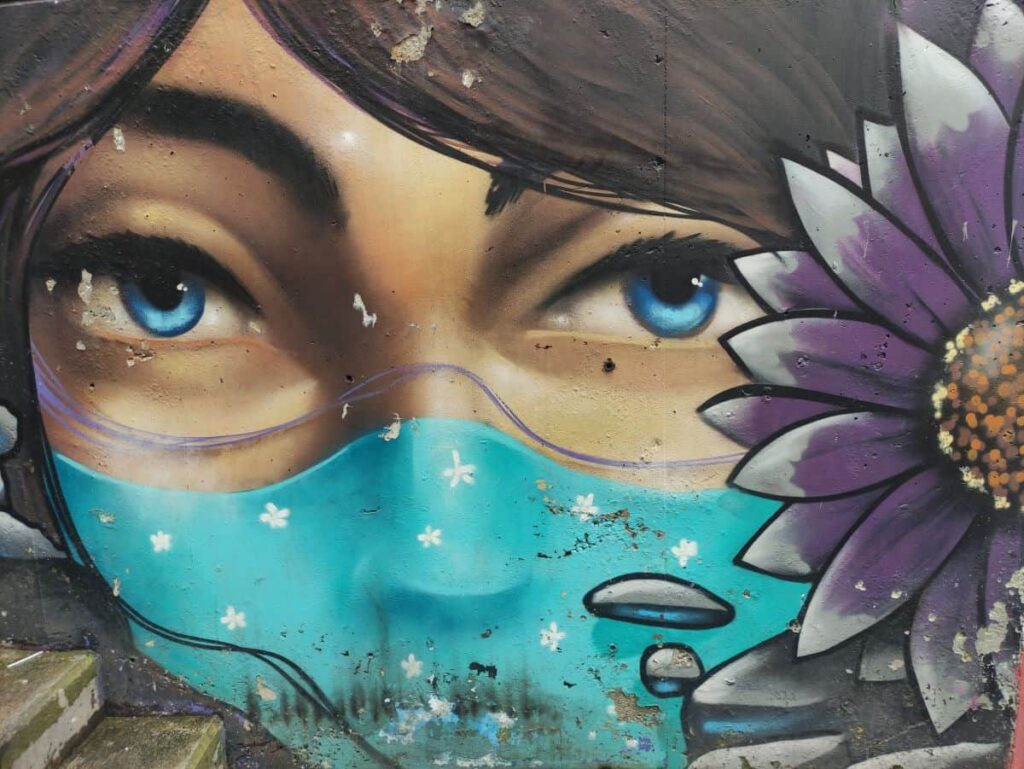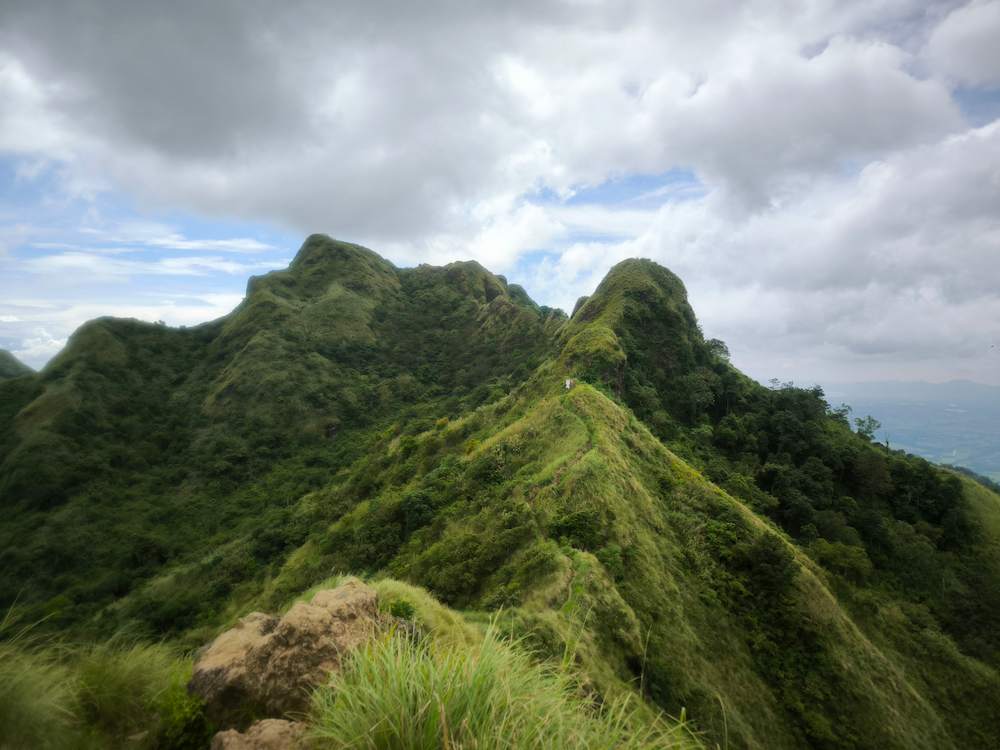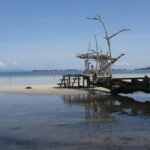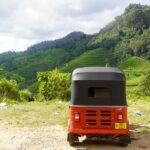Most people associate Medellin with the drug war of the 80s and 90s. However, this image has been a thing of the past for a few years – nowadays Medellin is a super modern and vibrant young city where it is great to live. Although the drug trade is not over, it takes place more underground. “The city of eternal spring” is what Medellin is often called because of its moderate temperatures. The country’s second-largest city, with nearly 2.7 million inhabitants, is the capital of the mountainous province of Antioquia and lies at an altitude of just under 1,500 meters.
History of Medellin
It is not possible to write about Medellin without a short excursus on the history of the city, the history is much too interesting for that.
Originally inhabited by indigenous peoples, the region around Medellín was settled by Spanish conquerors in the 17th century. The city was officially founded on November 2, 1675, and over the centuries developed into an important commercial center.
In the 19th century, Medellín experienced rapid growth, mainly due to the coffee boom. The rich coffee industry contributed significantly to economic development and led to a flourishing culture and architecture. The city became the center of the Colombian coffee trade and attracted entrepreneurs, investors and immigrants from all over the world.
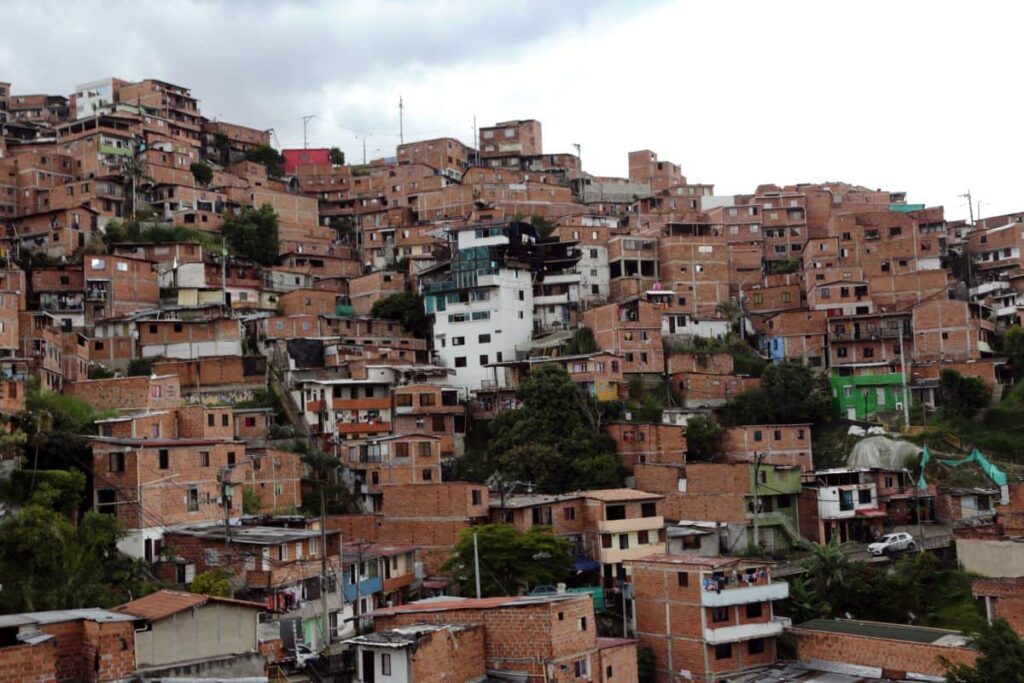
During the 20th century, Medellín became a thriving industrial city known for its textile and garment industries. However, the city also experienced difficult times, especially in the 1980s and 1990s, when it was under the influence of Pablo Escobar’s notorious drug cartel. Medellín was the scene of violent clashes and drug wars that left the city in a state of insecurity and damaged its reputation internationally.
Today, Medellín is an up-and-coming city with a vibrant cultural life, a thriving art scene and innovative social projects. Residents have proudly revitalized their city and are working to leave its negative image behind. Medellín has received numerous awards for its urban development projects and is often cited as an example of how a city can bring about positive change.
Top sights in Medellin
Medellin is unique. We would not have expected you to be so modern and clean, at least in and around the center. Add to that the mild climate and the young vibe of the city. We thought it was pretty cool, anyway. For us, Medellin is a city you have to experience. Be it during the day or at night. In the following section we focus on the classic sights of Medellin.
1 Experience the city
Yeah, I know, kind of a stupid number 1 highlight for a city like Medellin…. but what can I say!!! Walk around the city and feel it. Whether in the evening in one of the thousands of bars, during the day by metro, gondola or on foot. Whether street food, clothes, art, there really is something for everyone to see. Of course, you should not be careless and make sure which neighborhoods you can visit without hesitation. Our hostel was in Floresta, we were out and about in Laureles, San Javier (Comuna 13), el Centro and of course the tourist district of Poblado.
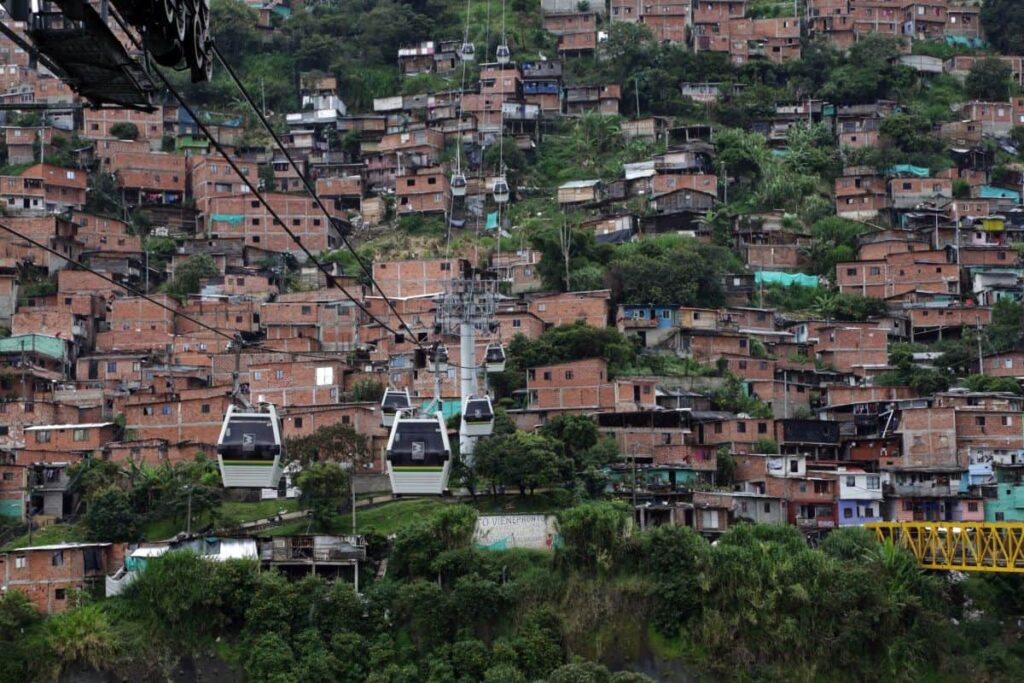
2 Comuna 13
This was once one of Medellin’s most dangerous neighborhoods and something like the epicenter of the Medellin cartel around Pablo Escobar. The neighborhood has been at war for decades between rival drug gangs, paramilitaries and the leftist Farc guerrillas. Nowadays, the neighborhood is an absolute tourist magnet and attracts thousands of visitors every day with guided tours. As exciting as the neighborhood is, visitors seem to forget what used to happen here. That’s why you should make sure that you go with the right tour operators and don’t book a “Pablo Escobar” tour that romanticizes everything that happened around the drug lord. Nowadays, the neighborhood is dominated by hip-hop culture. There are b-boys, sprayers, guys and girls dueling over rap battles and djs. Everywhere you can also feel how proud the residents are of the development of their neighborhood. There are modern schools and initiatives that show kids a path that leads far away from drugs. What fascinated me most was the positive vibe and dynamics of the neighborhood. As a big hip-hop fan, I was of course fascinated by all the artists.
4 Plaza Botero
Plaza Botero is one of Medellin’s landmarks. The square is also a sculpture park with numerous disproportionate figures of the Colombian artist Fernando Botero. The 23 portly figures are a very popular photo motif among visitors to Medellin. The square is surrounded by the Rafael Uribe Palace of Culture, numerous cafes, art exhibits and street performers. We were also warned against pickpockets, who probably also like to do their mischief here. Admittedly, we found the square quite nice but also not really more.
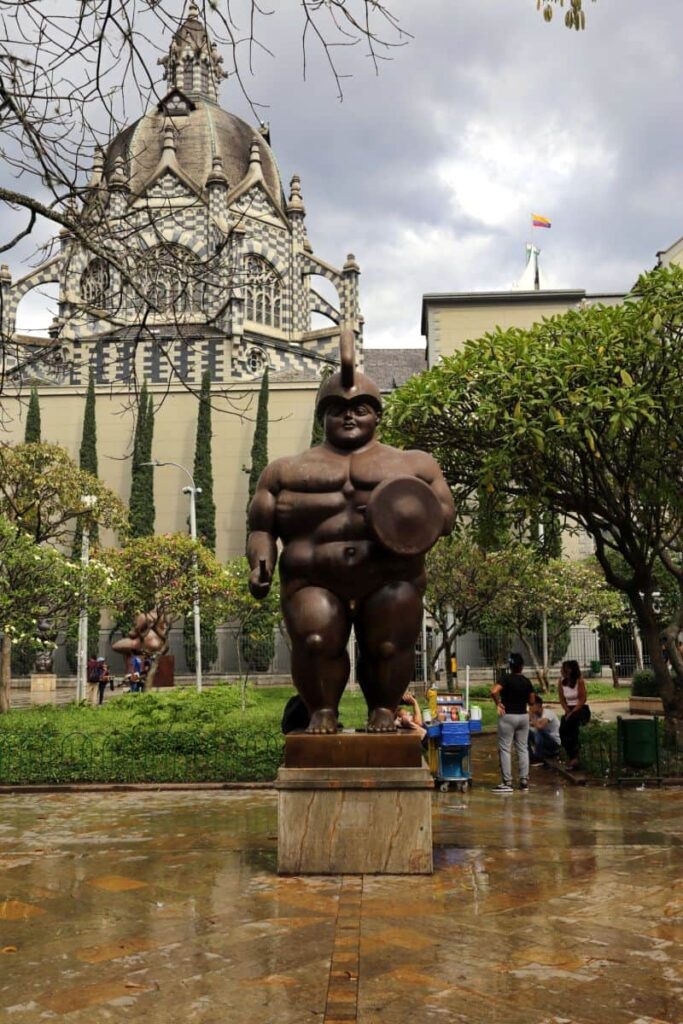
5 Trip Guatapé
Right next to Medellin is the small town of Guatapé with its characteristic monolith and the beautiful lake landscape. You should not miss a trip to Guatapé.
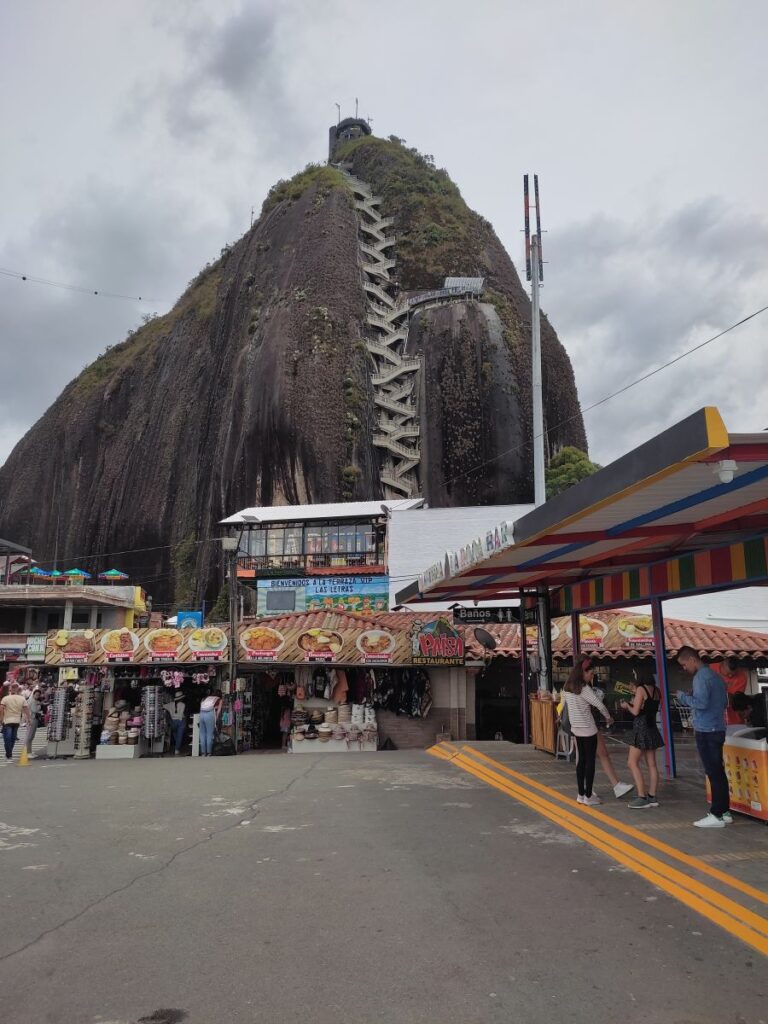
The best neighborhoods in Medellin
As so often, it depends of course on what you want. Also, we have not been in the whole city, but can only tell you about our experiences and our feelings. Here is a selection of neighborhoods we would like to talk to you about.
El Poblado
You will find on every blog and in every travel guide that “El Poblado” is the goto district of Medellin. We found it rather chavvy and full of unthinking tourists and expats. There are of course some cool boutiques, bars and clubs, but it becomes clear very quickly that the offers in the neighborhood are rather less aimed at the residents of Medellin. Therefore, to be honest, we liked it rather less. Certainly there are some secret spots here that we didn’t discover. El Poblado is also much more expensive than the other neighborhoods.
Floresta
Here we had our hostel and we liked this somewhat quieter neighborhood. It is also super easy to reach by metro and is located in the middle of a residential area.
Estadio & Laureles
One metro stop away from Floresta is Estadio, a very lively neighborhood with hardly any tourists (compared to Poblado). We really liked it here as it felt much more local than Poblado. There are numerous bars and cafes. During the day there is a big market in Estadio where you can buy anything. Noticeable are all the cap stores, unfortunately I couldn’t find one I liked. Estadio is named after the Atanasio Girardot stadium, where the local soccer teams play their games. Laureles is the more relaxed part of the two neighborhoods. For going out, the area is along the “Carrera 70”.
El Centro (La Candeleria)
The center of the city is the place with the most attractions, such as Plaza Botero or the “Museo de Anioquia” or the cathedrals of the city.
Where to stay in Medellin?
Here, of course, there are endless possibilities. We were very happy with our choice to stay in Floresta, because it was relatively quiet here, but we came with the metro relatively quickly to all places. We stayed at the “Almarita Guest House.” It is a large apartment with dorms and private rooms. The owners also live in the place and are very concerned about the well-being of their guests. By the way, the fries and burger are awesome (all homemade) if you decide to visit there. The owner is a huge music and comic fan which can be easily seen in the interior. The accommodation was cheap and very cozy, we enjoyed our stay here very much and can only recommend it.
https://goo.gl/maps/vc1SRxseRDNmfAU89Is Medellin safe?
It is difficult to give a general answer to this question. The fact is, however, that the security situation in Medellin has improved considerably in recent years. Especially in the tourist areas and popular neighborhoods, there is increased police presence and security measures. However, it is advisable to take some basic precautions: I would not walk around in secluded streets at night and if in doubt, take a taxi/Uber home.
Public transportation in Medellin
The public transport in Medellin is well developed, there is a modern metro, buses and a gondola system. We would recommend the ride with the gondola to every visitor, because depending on the route, you also get a really great view of the city.
Getting to and from the city is relatively easy by bus. Medellin also has a large international airport. We drove from Santa Marta to Medellin and from there continued by bus to Bogota. This was possible without any problems.
Frequently asked questions about your visit to Medellin
The most famous attractions in Medellin are Comuna 13, Plaza Botero, Metrocable, Parque Arví, Parque Explora, and El Pueblito Paisa.
Due to its location in the Andes, Medellín generally has a temperate, mild climate throughout the year with average temperatures around 20 to 25 degrees Celsius (68-77 degrees Fahrenheit). The city is often referred to as the “City of Eternal Spring.”
The city is situated in the northwestern part of Colombia, in a valley in the Andes. Medellin is the capital of the mountainous province of Antioquia.
It depends on what you want to see. We recommend staying at least 5 days to explore the city’s different neighborhoods and facets.


